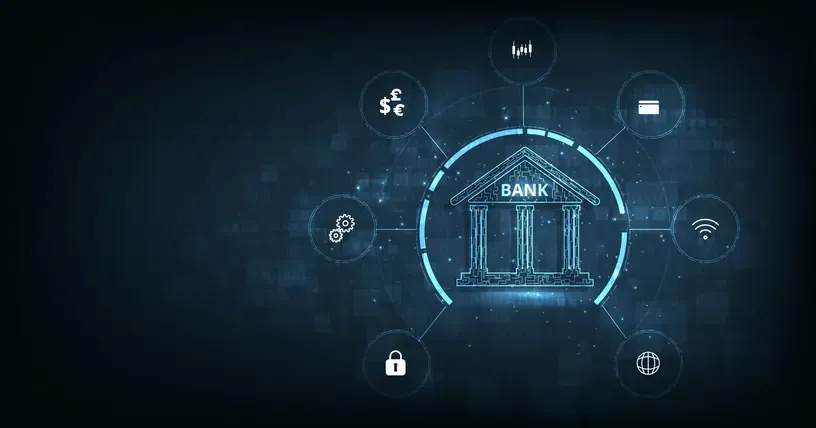
For decades, mid-sized banks relied on legacy core platforms to handle transactions, reporting, and daily operations. These systems were once reliable and secure—but in today’s digital-first economy, they’ve become roadblocks. Customers demand 24/7 access, fintechs set new standards for speed, and regulators are enforcing stricter
requirements. Meanwhile, outdated cores consume up to 70% of IT budgets just to keep the lights on.
The result? Modernizing core banking systems is no longer optional, it’s a strategic necessity. Still full-scale replacements carry risks. That’s why the most successful institutions adopt a phased, incremental roadmap. Below, we outline a practical four-step approach that balances continuity with transformation.
Phase 1: Assessment s Vision – Building the Foundation
Every modernization journey begins with understanding where you stand today. Banks must first base their current systems, costs, and risks to set a clear vision for tomorrow.
Key actions include:
Stakeholder workshops – Align business, IT, compliance, and operations teams on pain points and goals.
Technology audits – Inventory modules, data flows, and bottlenecks.
Cost analysis – Model total cost of ownership (TCO) under legacy vs. modernized scenarios.
Deliverables: A target operating model and a business case that makes the financial, operational, and strategic justification for modernization.
Why it matters: Without this foundation, modernization risks becoming a technology project rather than a business transformation.
Phase 2: Target Architecture s Technology Selection – Designing for Agility
With a clear vision in place, the next step is defining the architecture that will carry the bank forward. This is where decisions around modularity, cloud deployment, and integration come into play.
Key actions include:
Breaking down monoliths into modular services for accounts, payments, loans, and more.
Evaluating cloud models (public, private, hybrid) against compliance, scalability, and cost.
Platform decisions – Weighing commercial modular cores vs. open-source frameworks.
Build vs. buy analysis – Balancing vendor partnerships with in-house development.
Deliverables: An architecture blueprint, technology evaluation report, and a clear cloud strategy.
Why it matters: The right design unlocks flexibility and ensures compliance with global regulations like Basel 3.1, PSD2, and AMLD.
Phase 3: Incremental Implementation – Reducing Risk, Delivering Value
Rather than a risky “big bang” cutover, mid-sized banks should modernize piece by piece.
Techniques like the strangler pattern allow legacy and modern systems to coexist temporarily while functions are gradually replaced.
Key actions include:
Modular migration – Replacing functions one at a time with minimal disruption.
Unified integration layers – Using API gateways, event buses, and service meshes to connect old and new systems.
Rigorous data migration – Applying dual-write techniques and staged ETL pipelines for accuracy.
Agile delivery – Running 2–4-week sprints, supported by CI/CD pipelines and automated testing.
Deliverables: A phased migration plan, integration architecture, and validation reports.
Why it matters: This approach minimizes downtime, validates each step, and builds trust across the organization.
Phase 4: Optimization s Continuous Improvement – Sustaining the Advantage
Modernization doesn’t end with migration. Banks must continuously monitor, refine, and evolve their new core systems to stay competitive.
Key actions include:
Performance and compliance monitoring – Tracking KPIs like latency, uptime, and audit trails.
Feedback loops – Incorporating staff and customer input into iterative improvements.
Governance structures – Establishing Centers of Excellence (CoEs) or architecture boards for ongoing oversight.
DevSecOps pipelines – Embedding security and compliance checks directly into the release process.
Deliverables: Real-time operations dashboards, governance playbooks, and actionable feedback reports.
Why it matters: Ongoing optimization ensures the system remains agile, compliant, and ready to scale with new innovations like AI-enabled fraud detection or real-time reporting.
Measuring the Impact
Banks that have adopted this phased approach report tangible gains:
30% reduction in IT maintenance costs within 12–18 months
25% faster time-to-market for new digital products
40% lower downtime during updates compared to monolithic cores
Compliance reporting completed in hours, not weeks For example:
A mid-sized EU retail bank cut customer onboarding from 10 days to just 48 hours.
A US institution reduced regulatory reporting preparation time by 40% thanks to streamlined data integration.
The Takeaway
Core banking modernization is a marathon, not a sprint. For mid-sized banks, the path forward is clear: assess your starting point, design a flexible target architecture, implement incrementally, and optimize continuously.
This phased roadmap reduces risk, accelerates ROI, and builds an agile backbone for the future. With regulatory deadlines approaching and customer expectations soaring, now is the time to act.
Are you ready to begin your modernization journey? Start small with a pilot project, prove the value, and scale with confidence. Every step you take unlocks momentum, turning gradual progress into transformational impact for your customers and teams.


